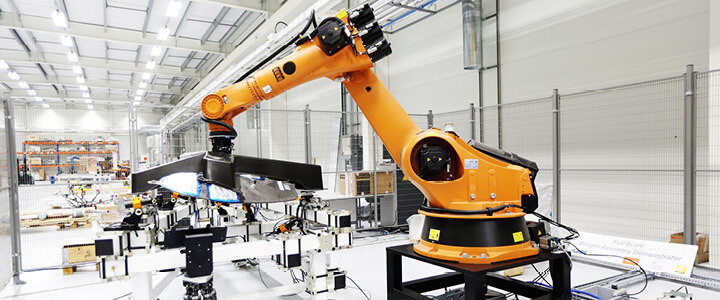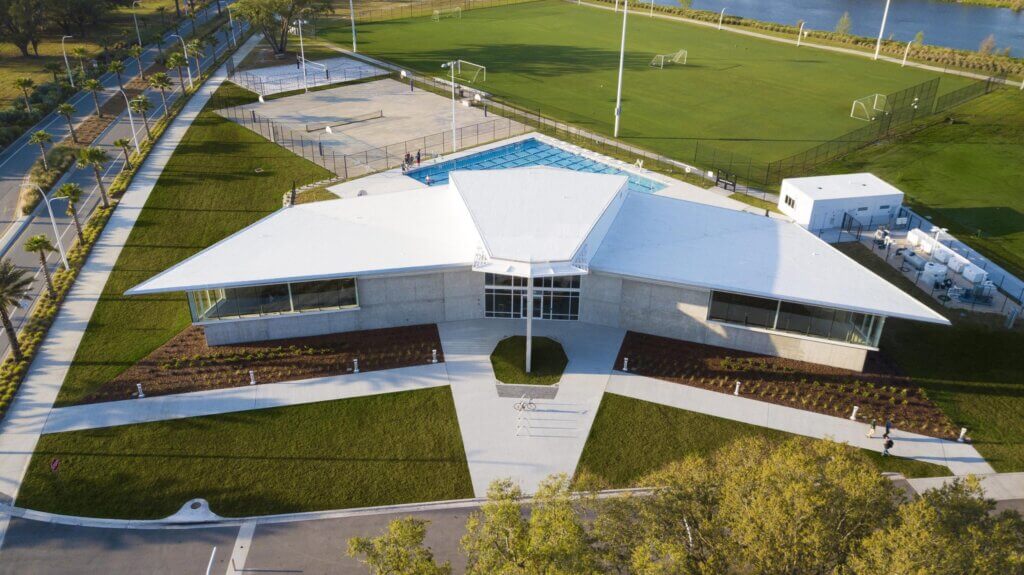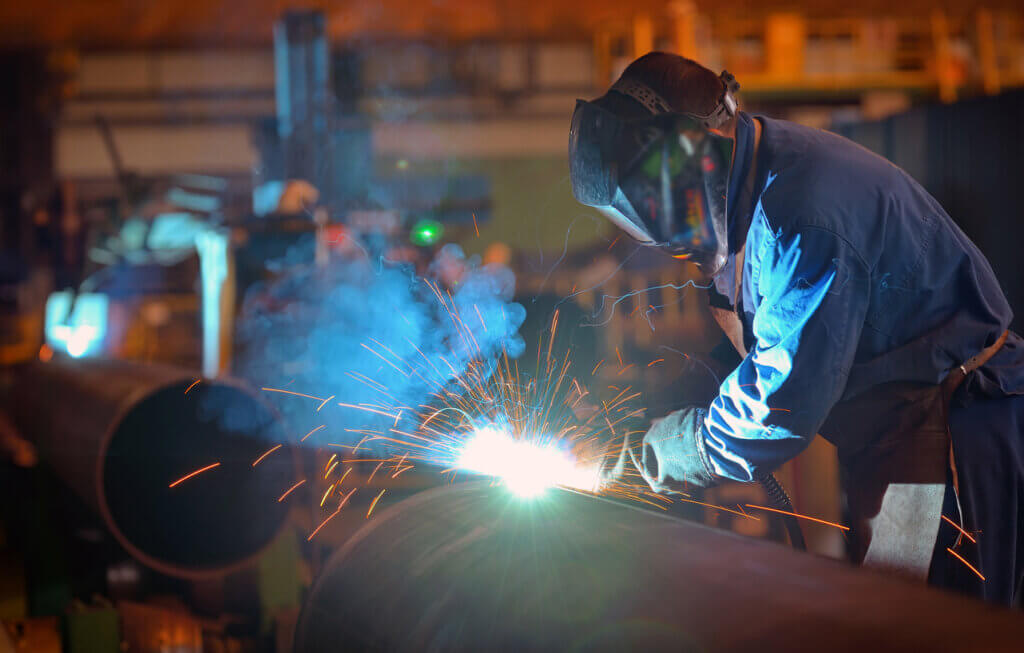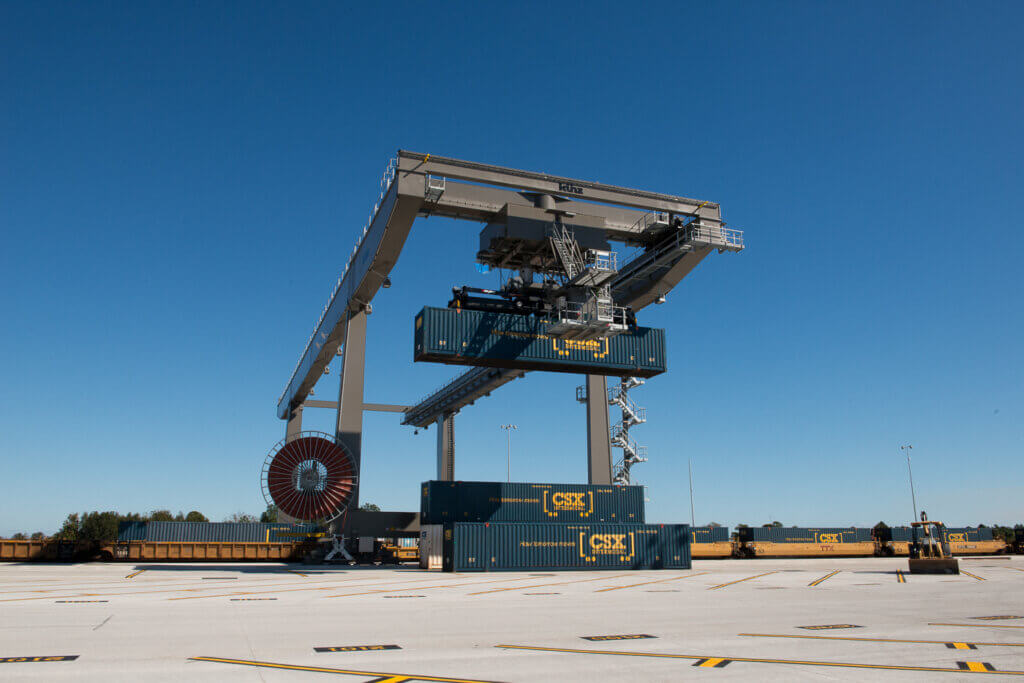Robotics could Propel Economic Development in Polk County
Robotics will be a pivotal economic driver of the future.
Robotics could be Polk County’s next boon business, but it also could have the opposite effect, pushing some people out of their jobs. The Lakeland-Winter Haven MSA ranks third among large metro areas vulnerable to automation, according to Brookings Institution report called “Automation and Artificial Intelligence: How Machines Are Affecting People and Places.” The January 2019 report shows the county is vulnerable because of the many distribution centers, warehouses, and call centers located here – all prime targets for robotic takeover.
But the manufacturing and logistics industries, and stakeholders such as Polk State College and others, are building a talent pipeline that could be the reason Polk County flourishes instead of flounders. Many of the jobs are high paying, and Polk County is uniquely seated along the high-tech corridor of Central Florida. Getting the next generation of engineers, scientists, programmers, and coders started now is critical to maintaining the businesses being built in Polk County.
“We must look at the growth of technology and robotics as an opportunity to propel the economic development of Polk County forward,” said Polk State College President Angela Garcia Falconetti, Secretary and Treasurer of the Central Florida Development Council Board of Directors. “For Polk State, that means remaining on the cutting edge of program development by working closely with industry leaders to offer the workforce training and degree programs needed both now, and 10 and 20 years from now.”
Robotics and unmanned systems are being used on the ground (autonomous vehicles), in the air (drones), and in the water (submersibles).
And some Polk County companies are already deeply entrenched in robotics:
- Sofidel uses robotics components and processes in its manufacturing.
- Amazon and Walmart use robotics to keep their distribution centers running.
- Lockheed Martin uses virtual robotics for their business systems and accounting.
- Local hospitals use da Vinci® robots for surgery. More growth is expected in this area.
- The Polk County Sheriff’s Office uses search-and-rescue robots, drones, and submersibles.
All of that is good for the economy, and a path forward for the county. Falconetti is certain Polk State’s role in robotics programming will expand to develop a pipeline of students for jobs that do not event exist yet.
Robotics at Polk State
Mori Toosi, program director of Engineering Technology at Polk State College, said robotics plays a big part in manufacturing automation.
Earlier industrial robots were performing routine, simple and repetitive tasks, mostly in a job environment hazardous for people. Today’s robots are intelligently designed, built and programmed to perform sophisticated job tasks.
Most machine operations in modern and advanced manufacturing are automated and producing high-quality goods at very high speeds and productivity rates. To integrate the application processes between machines, compatible industrial robots are needed to have smooth operation. The industry has recognized the importance of machine-human interactions and interfaces, and Engineering Technology degree and certificate curriculums are designed to fulfill the needs of applied engineering.
Polk State College offers a series of certificate program that are stackable to complete a two-year Associate of Science degree in Engineering Technology. Students may pursue training in one the following specialized areas:
- Advanced Manufacturing specialization: This area prepares competent technicians for automation and mechatronics operations. “Graduates of the program are able to write and modify computer programs on Programmable Logic Controllers (PLCs) for systems operations and they are able to write advanced programs for robots to integrate the applications within several machines and manufacturing cells,” Toosi said. “Students learn how to do troubleshooting if the machine and/or operation stops,” he said, along with learning about hydraulics, pneumatics and other machine components, hardware and software apps and the different components of robots to be able to repair and/or replace the parts.”
Students who follow this path are on the factory floor and act as applied engineers, he said. “They learn critical thinking, teamwork and coordination of operations, among other things,” Toosi said.
- Mechanical Design and Fabrication: This specialization teaches students about the production of machine parts and components. “Students design mechanical components of machines utilizing a 3D solid modeling design software (SolidWorks) for more advanced and mass production parts, while learning programming utilizing traditional Computer Numerical Control (CNC) codes,” Toosi said.
They design the parts then translate the design into a language that machines can understand. The software file is then sent to the machine, which is configured to cut and create the part. This area requires precise measurements, quality control and inspections, which the students perform during their training at Polk State College.
Critical thinking is stressed in all courses, Toosi said. “We have to make sure our students can connect dots and come to conclusions.”
Most graduates of the program stay in Polk County, where they may have family and a high quality of life, he said. And, jobs are available. Since the program started in 2012, 51 students have graduated, and all have found employment.
Those that are hiring Polk State grads include Coca-Cola, Pallet-One, Publix, Seminole Electric, Mosaic Inc., Barney’s Pump Inc., Saint-Gobain Corporation, Pepsi, and Pepperidge Farm, which are represented on the College’s Industry Advisory Board.
“They are monitoring what we teach and how we teach. They are making suggestions, adjustments and corrections to curriculum to ensure that our grads are trained and ready to work on day one,” Toosi said.
Polk State Aerospace Program Director Eric Crump says robotics are also a part of his program, where an introductory course is offered and a degree concentration is being developed in unmanned aircraft systems (UAS) for the Bachelor of Science in Aerospace Sciences.
Drones are used in two ways with UAS, Crump said. Those are:
- The operation of the drone. This includes flying the craft, understanding how to do it legally and determining which drone to use for different operations. He explains that the interconnected parts between the controller and the drone use robotics.“If there’s a 200-acre field and you want to fly over and look for water quality or crop nutrition, you can sit with a remote controller and make fly lines. They might not be perfectly straight,” Crump said. Or, you can automate the process and use agricultural drones to do the job. “Throw it in the air, then it comes back and lands at your feet. Legally, you have to be there and watch it, but you can work on your phone or laptop. You’re not totally committed to hand-flying the drone anymore.”
- Data analysis. “We use the drone to get something out of it – construction, agriculture, public safety,” Crump said. “The only reason drones make sense is because of the stuff we can put on them that we couldn’t five to 10 years ago.”
Robotics components are used in both, and Polk State offers a 16-week course in unmanned aircraft systems to introduce students to automation through the control unit.
“It gives them the idea how the device works,” Crump said, adding students are in the field five to six days during the course to fly the machines and capture data. “It opens their minds to the possibilities. … This is not deep diving, but to show students these are opportunities and things you can do with unmanned aircraft. We hope to excite them and make them ask questions.”
Crump said the challenge is staying at the leading edge of drone technology and robotics.
Capturing Kids’ Interest Before College
Polk State also introduces students to robotics before they even get to college with innovative programs and projects, and collaborations with local entities to impact higher education and learning transformation.
“We have to prime the pump so there’s more students entering the STEM pipeline in general,” Naomi Boyer, vice president of Special Projects, Strategic Priorities & Growth at Polk State College said. “We focus on underserved populations. There’s a real deficit of females in engineering degree (programs). Many do not have access to the advanced curriculum and knowledge. We can attract a diverse pool of students and interest them in the exciting world of robotics so that it piques their interest and they have the motivation to become better academically prepared.”
The different programs Polk State College oversees to bring robotics to the community:
- Kids at College, a summer program for children ages 5 to 14.
- The Enrichment Academy, STEM-focused and robotics classes for kindergartners through 12th-graders.
- TALON Robotics, which was a summer program for those in sixth through 12th grade. The College is now talking to the School District to potentially resurrect it.
- TeacherBot Academy, a training program that shows teachers how they can incorporate LEGO robotics into the curriculum, beginning in early childhood.
Halan Badilla, a senior who’s part of the Technobotics Academy at Winter Haven High School, said he caught the robotics bug through a “mix of my innate enjoyment in both creating things and/or tinkering with things as well as my sixth-grade robotics teacher, who introduced us to LEGO MINDSTORMS EV3, a programmable LEGO construction product.”
From there, he attended TALON during the summer between sixth and seventh grades. “TALON was a camp that taught you even more about EV3, but also engineering concepts, structure, programming — everything you’d need for a robot. That camp was what made me want to go into some form of robotics as a career. The challenges and being able to apply what you know really got me pumped to start working. The next year of the camp was what eventually got me into VEX Robotics, which is what I work with now.”
Competitions help students build soft skills — like being able to communicate, showing up for work, being punctual, problem solving, dedication, and commitment — that they may not learn elsewhere.
“The robotics process of design, build, program, test, retest, iterate is only one portion of the substantial learning that students engage in. The competition and team exercises also build a strong ‘employability skill’ base, which is something our employers across Polk County and nationally have been noting as lacking in new employees,” said Boyer, a member of the Central Florida Development Council executive board.
Robotics programs are instilling these important life skills for students, both in their curriculum and in the competition process.



